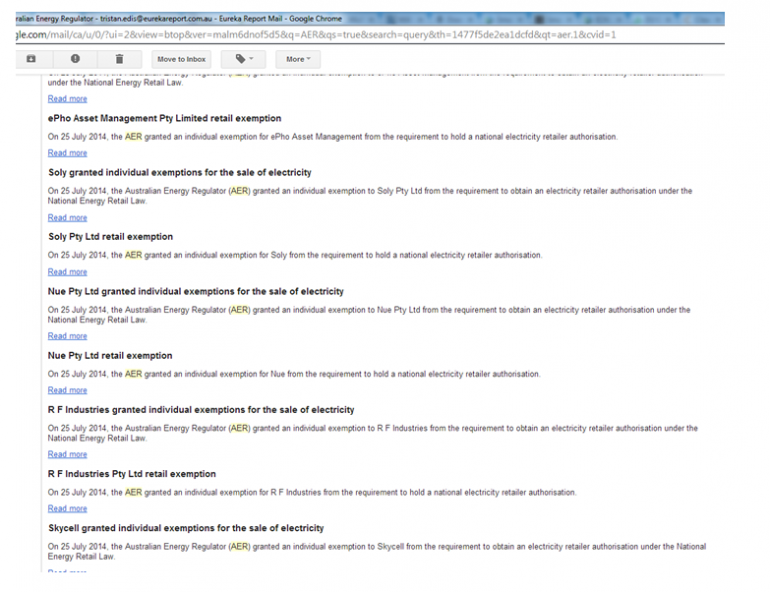How solar may become a service, not a system
You could sense the discomfort and uneasiness in the audience at Clean Energy Week conference as Tim Sonnreich, an adviser to former Victorian Premier John Brumby and the Clean Energy Council’s strategic policy manager, rubbished the idea that large swathes of people would abandon the grid in favour of batteries and solar.
For many in the solar sector batteries are the next hot thing, offering a potential holy grail where the solar sector can give a great big ‘up yours’ to power companies.
At present solar companies are being frustrated in their attempts to sell more and bigger solar systems to customers. One challenge is power companies offering prices to buy power exported to the grid from customer's solar systems that are a fraction of what they charge to sell power from the grid to those same customers. The other is network companies applying highly restrictive or costly requirements for connection to the grid with bigger systems.
The end result is a customer that would have been prepared to buy a large solar system ends up with something much smaller or, worse, is lost altogether.
Batteries offer the potential to allow solar companies to get around these two challenges by using all the power generated from a solar system for internal use.
The problem for many in the audience was that Sonnreich had a damn good argument for why customers, in spite of their dislike for power companies, aren’t going to rush to abandon the grid. Essentially, it was because they:
1) Lack the knowledge and capability to manage their own power supply and can’t do without it;
2) In spite of their whinging and moaning, consumers can’t even be bothered making a few phone calls that would provide a major saving by swapping power retailer, so what’s the hope of them engaging in the far more involved process of setting up their own stand-alone power supply system.
Sonnreich’s essential point was that consumers don’t make purchasing decisions in a perfectly rational way. They lack information, they are risk averse and, most importantly, they are lazy (or to put it more nicely, they are busy and creatures of habit).
So even if the cost of a 'solar plus battery' system dropped to levels competitive with power from the grid (and there’s still some way to go) the more involved nature of such a purchase decision means it will be hard to overcome people’s overwhelming impulse to stick with their current habits.
However, what Sonnreich missed is that batteries and solar systems might not be sold to consumers as systems but rather as simply power, just like from any other electricity retailer.
The customer will be offered power at a cheaper rate than what they currently receive from their existing retailer and, in return, they agree to a longer term contract and to the installation of solar panels and a battery pack on their home or business premises (although they’ll most likely still remain connected to the grid, but with a much reduced need for peak capacity from the grid). The customer won’t own or manage the system themselves. They don’t need to understand the nitty-gritty of solar and batteries, how lithium-ion might compare to lead acid, or the quality of one power inverter versus another.
All the customer needs to do is compare one price for a kilowatt-hour of electricity against another.
Just about every day the Australian Energy Regulator sends out an email, like the one below, listing one solar PV retailer after another seeking an authorisation to sell power rather than a solar system to consumers, without becoming an authorised electricity retailer (this carries a series of onerous regulatory obligations).

These companies, and there are a lot of them, are all moving towards a model of selling solar as a power service, rather than a piece of equipment.
The Clean Energy Finance Corporation’s latest move to financially back such a model might be a key catalyst for 'solar as a service' to become far more widespread in Australia.
















